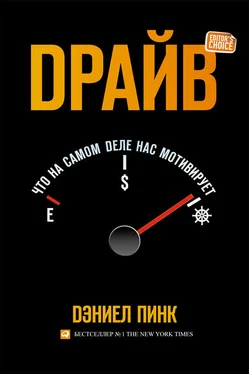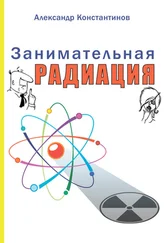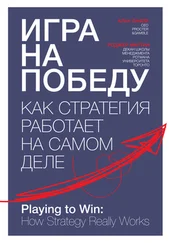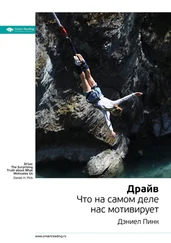И нельзя забывать о матери этой троицы — Джессике Энн Лернер. Как обычно, она была первым и последним слушателем, и самым объективным судьей всех идей, которые рождались в моей голове. И как всегда, Джессика прочитывала каждое написанное мною слово, включая тысячи рабочих вариантов, причем вслух, пока я сжимался в кресле, ожидая вердикта. По этим причинам, а также по другим, более существенным, о которых вам знать не обязательно, в присутствии этой прекрасной, грациозной женщины меня часто охватывает чувство благоговения и любви.
Harry F. Harlow, Margaret Kuenne Harlow, Donald R. Meyer, «Learning Motivated by a Manipulation Drive,» Journal of Experimental Psychology (1950), p. 231.
Harlow, Harlow, and Meyer, p. 233–234.
Harry F. Harlow, «Motivation as a Factor in the Acquisition of New Responses,» In Current Theory and Research on Motivation, (University of Nebraska Press, 1953), p. 46.
Харлоу в определенной степени стал частью научного истеблишмента. Он получил Национальную медаль за научные заслуги и стал президентом Американской психологической ассоциации. Чтобы узнать больше о жизни и работе Г. Харлоу, см.: Deborah Blum. Love at Goon Park: Harry Harlow and the Science of Affection (Perseus, 2002); Jim Ottaviani & Dylan Meconis. Wire Mothers: Harry Harlow and the Science of Love (G. T. Labs, 2007).
Edward L. Deci, «Effects of Externally Mediated Rewards on Intrinsic Motivation,» Journal of Personality and Social Psychology (1971). Vol. 18, p. 114.
Edward L. Deci, «Intrinsic Motivation, Extrinsic Reinforcement, and Inequity,» Journal of Personality and Social Psychology (1972). Vol. 22, p. 119–120.
«Important Notice: MSN Encarta to be Discontinued,» Microsoft press release (30 March 2009); Ina Fried, «Microsoft closing the book on Encarta,» CNET News (30 March 2009); «Microsoft to Shut Encarta as Free Sites Alter Market,» The Wall Street Journal (31 March 2009). Данные о Wikipedia см.: http://en.wikipedia.org/wiki/Wikipedia:About.
Karim R. Lakhani & Robert G. Wolf, «Why Hackers Do What They Do: Understanding Motivation and Effort in Free / Open Source Software Projects,» in Perspectives on Free and Open Software, edited by J. Feller, B. Fitzgerald, S. Hissam, and K. Lakhani (MIT Press, 2005), p. 3 and p. 12.
Jurgen Blitzer, Wolfram Schrettl, Philipp J. H. Schroeder, «Intrinsic Motivation in Open Source Software Development,» Journal of Comparative Economics, Vol. 35 (2007).
«Vermont Governor Expected to Sign Bill on Charity-Business Hybrid,» The Chronicle of Philanthropy, News Updates (21 April 2008).
Юнус М. Создавая мир без бедности. — М.: Альпина Паблишер, 2010. (Muhammad Yunnus, Creating a World without Poverty: Social Business and the Future of Capitalism. Public Affairs, 2007, p. 23; Aspen Institute, Fourth Sector Concept Paper. Fall 2008; «B Corporation,» MIT Sloan Management Review. 11 December 2008; http://www.bcorporation.net/declaration).
Stephanie Strom, «Businesses Try to Make Money and Save the World,» The New York Times (6 May 2007).
Colin Camerer, «Behavioral economics: Reunifying psychology and economics,» Proceedings of the National Academy of Sciences, Vol. 96, September 1999.
Bruno S. Frey, Not Just for the Money: An Economic Theory of Personal Motivation (Edward Elgar Publishing, 1997), p. 118–119. См. также: Bruno S. Frey & Alois Stutzer, Happiness & Economics (Princeton University Press, 2002).
Bradford C. Johnson, James M. Manyika, Lareina A. Yee, «The next revolution in interaction,» McKinsey Quarterly (No. 4, 2005).
См.: Дэниел Пинк. Новый мозг. Почему правое полушарие будет править миром?, «РИПОЛ классик», 2014 / Daniel H. Pink, A Whole New Mind: Why Right Brainers Will Rule the Future (Riverhead Books, 2006).
Theresa Amabile, Creativity in Context (Westview, 1996), p. 119. Амабайл также отмечает, что правильное и осмотрительное использование внешних стимулов может поощрять творчество. Подробнее я буду говорить об этом в главе 2.
Telework Trendlines 2009, данные подготовлены The Dieringer Research Group Inc и опубликованы WorldatWork (February 2009).
Твен М. Приключения Тома Сойера. — М.: АСТ, 2010. (Mark Twain, The Adventures of Tom Sawyer. Oxford University Press, 1998, p. 23).
Mark Lepper, David Greene, Robert Nisbett, «Undermining children’s intrinsic interest with extrinsic rewards: A test of the «overjustification» hypothesis,» Journal of Personality and Social Psychology. Vol. 28 (1973).
Edward L. Deci, Richard M. Ryan, & Richard Koestner, «A Meta-Analytic Review of Experiments Examining the Effects of Extrinsic Rewards on Intrinsic Motivation,» Psychological Bulletin. Vol. 125, No. 6 (1999)
Jonmarshall Reeve, Understanding Motivation and Emotion, fourth edition (John Wiley & Sons, Inc., 2005), p. 143.
Dan Ariely, Uri Gneezy, George Lowenstein, and Nina Mazar, «Large Stakes and Big Mistakes,» Federal Reserve Bank of Boston Working Paper No. 05–11 (23 July 2005). Краткий обзор этого и других исследований Дэна Ариэли можно найти в статье: «What’s the Value of a Big Bonus?» The New York Times (20 November 2008).
«LSE: When performance-related pay backfires,» The Financial (25 June 2009).
Sam Glucksberg, «The influence of strength of drive on functional fixedness and perceptual recognition,» Journal of Experimental Psychology, Vol. 63 (1962); Sam Glucksberg, «Problem Solving: Response Competition Under the Influence of Drive,» Psychological Reports. Vol. 15 (1964).
Theresa M. Amabile, Elise Phillips, & Marry Ann Collins, «Person and Environment in Talent Development: The Case of Creativity,» in Talent Development: Proceedings from the 1993 Henry B. and Jocelyn Wallace National Research Symposium on Talent Development, edited by Nicholas Colangelo, Susan G. Assouline, and DeAnn L. Ambroson (Ohio Psychology Press, 1993), p. 273–274.
Jean Kathryn Carney, «Intrinsic Motivation and Artistic Success,» The University of Chicago (unpublished dissertation, 1986); J. W. Getzels and Mihalyi Csikszentmihalyi, The Creative Vision: A longitudinal study of problem-finding in art (Wiley Interscience, 1976).
Читать дальше
Конец ознакомительного отрывка
Купить книгу











